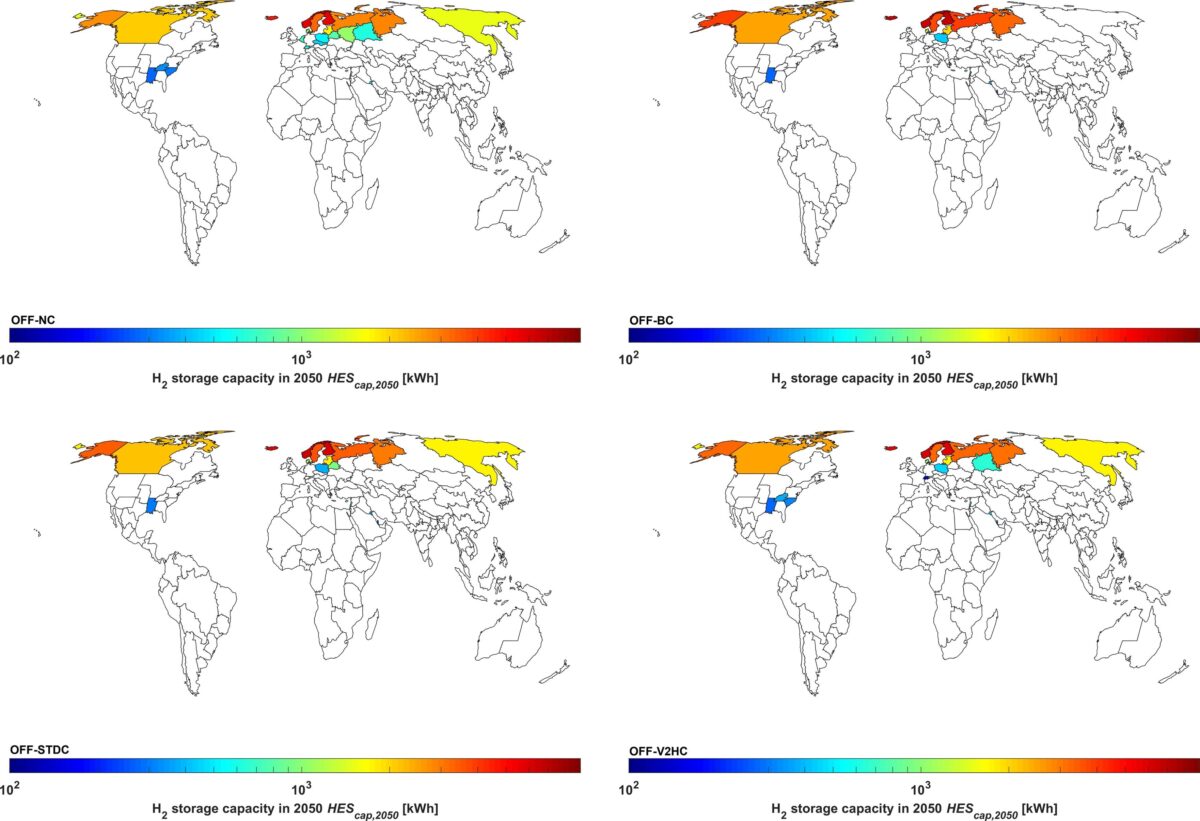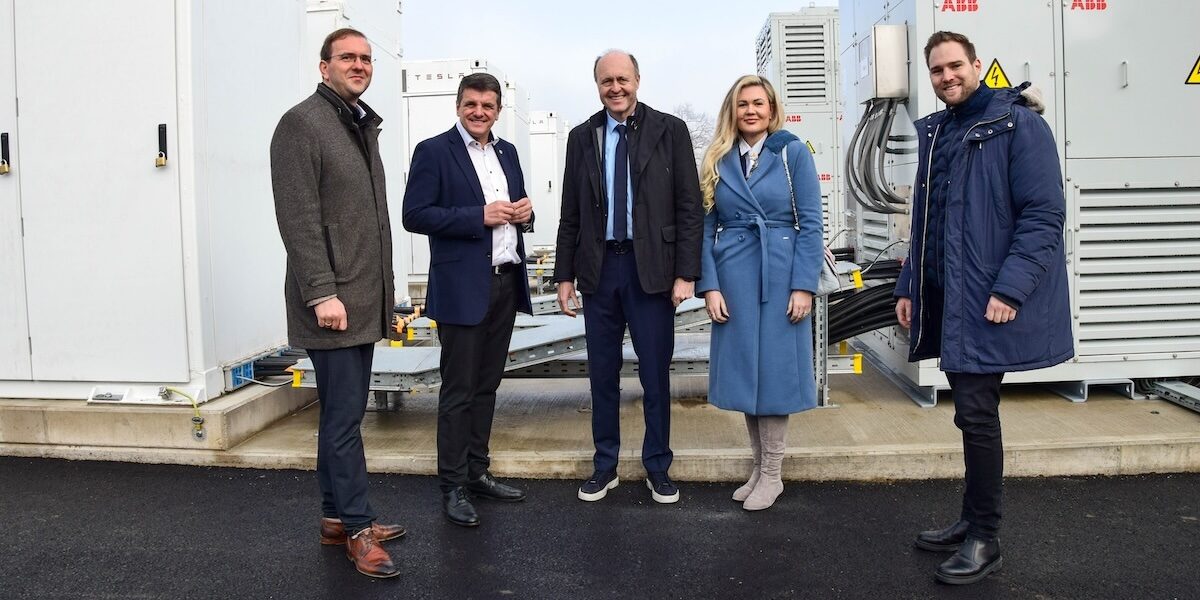Scientists from LUT University in Finland and the Regensburg University of Applied Sciences in Germany have studied whether seasonal hydrogen storage (SHS) can be a cost-effective solution for maximizing solar self-consumption in the coming decades.
The team conducted a global analysis across 145 regions from 2020 until 2050 in five-year increments under a “least-cost” model. They simulated a residential rooftop PV system with SHS using the software LUT-Prosume. The analysis included detailed projections for SHS system component costs obtained from various sources. The SHS components included a water electrolyzer, hydrogen compressor, storage tank, and fuel cell.
The study considers whether SHS is cost-optimized for either on-grid or off-grid operation across eight residential self-consumption scenarios. Some include electrical vehicles, lithium-ion battery storage, and a ground-source heat pump for space and water heating.
The results show that SHS can only be expected in a niche off-grid market, in regions limited to North America, Northern Europe, and Northwest Eurasia. Lebanon, Kuwait, Bahrain, and Qatar could also see small amounts of SHS capacity, according to the study. Regions south of Canada, Scandinavia, or the Baltics show relatively small SHS capacities of less than 1,000 kWh.
“It is presumed that regions with such small hydrogen energy storage capacities are slightly above the threshold at which the SHS with minimum capacities is more cost beneficial than a standalone PV and battery system,” said the researchers.
Notably, SHS is not the least cost option in any of the regions investigated for on-grid scenarios.
“High investment cost and low efficiency of the electricity-to hydrogen-to-electricity conversion via a water electrolyzer and fuel cell and major drawbacks for a successful introduction as a seasonal storage option in photovoltaic prosumer systems,” the scientists said.
They shared their findings in “Seasonal hydrogen storage for residential on- and off-grid solar photovoltaics prosumer applications: Revolutionary solution or niche market for the energy transition until 2050?,” which was recently published in Applied Energy.
This content is protected by copyright and may not be reused. If you want to cooperate with us and would like to reuse some of our content, please contact: editors@pv-magazine.com.



Are these researchers aware of 95% efficient and above electrolysis methods like Hysata’s capillary fed electrolyser, or H2Pro’s E-TAC system, not to mention recent work in China and Adelaide which achieves near 100% efficiency using untreated seawater?
The obsession with electricity -> hydrogen -> electricity seems odd too, given that we use far more energy in heating than to generate electricity. A fuel cell CHP would supply both from only a gas supply. You don’t HAVE to have a grid at all!
Look at the problem as one concerned with energy rather than the electrical form of it and a far more optimistic picture emerges.
In the study we considered WEL components with proven technology (PEM) which is available at small-scale and available cost data. The apparent high-efficient WEL you mention, are they suitable for micro sector-coupling at household scale? I doubt that untreated seawater is an option for most of residential households.
In the study, the FC is used as a CHP. As a fact, the thermal efficiency is higher than the electric efficiency. Heat from the FC is used in the system. The linear optimisation always has the option to use the FC heat-driven, which it did not do, as the investment cost for the component is simply too high.
Indeed, you do not have to have a grid, that’s why we considered both on-grid and off-grid. For the off-grid case, we found some regions where the seasonal storage system was deployed as least cost case. If a grid connection is available, grid balancing is simply more cost efficient than hydrogen seasonal storage.